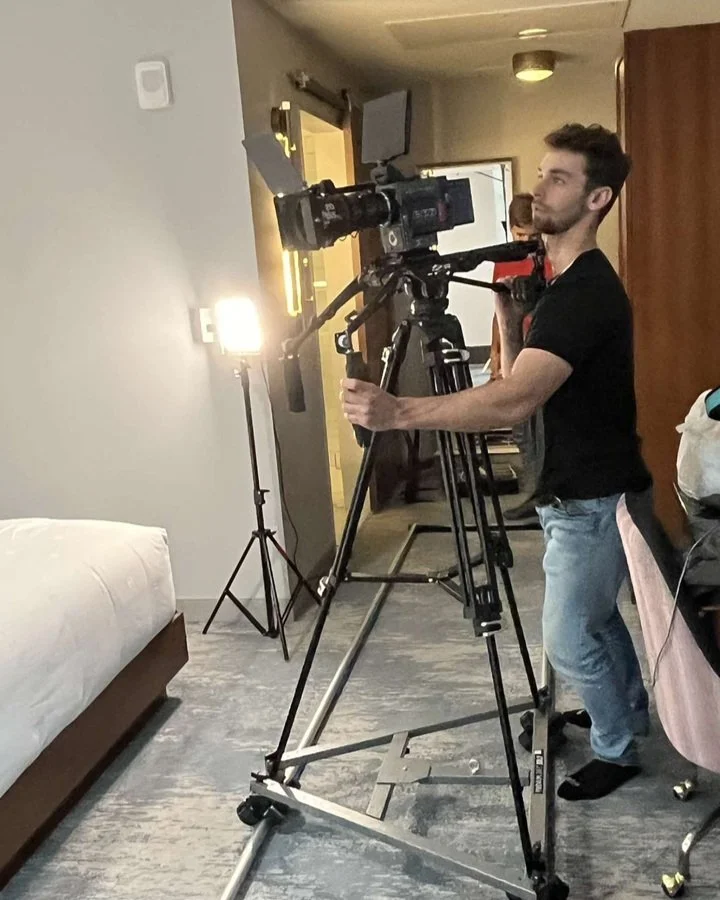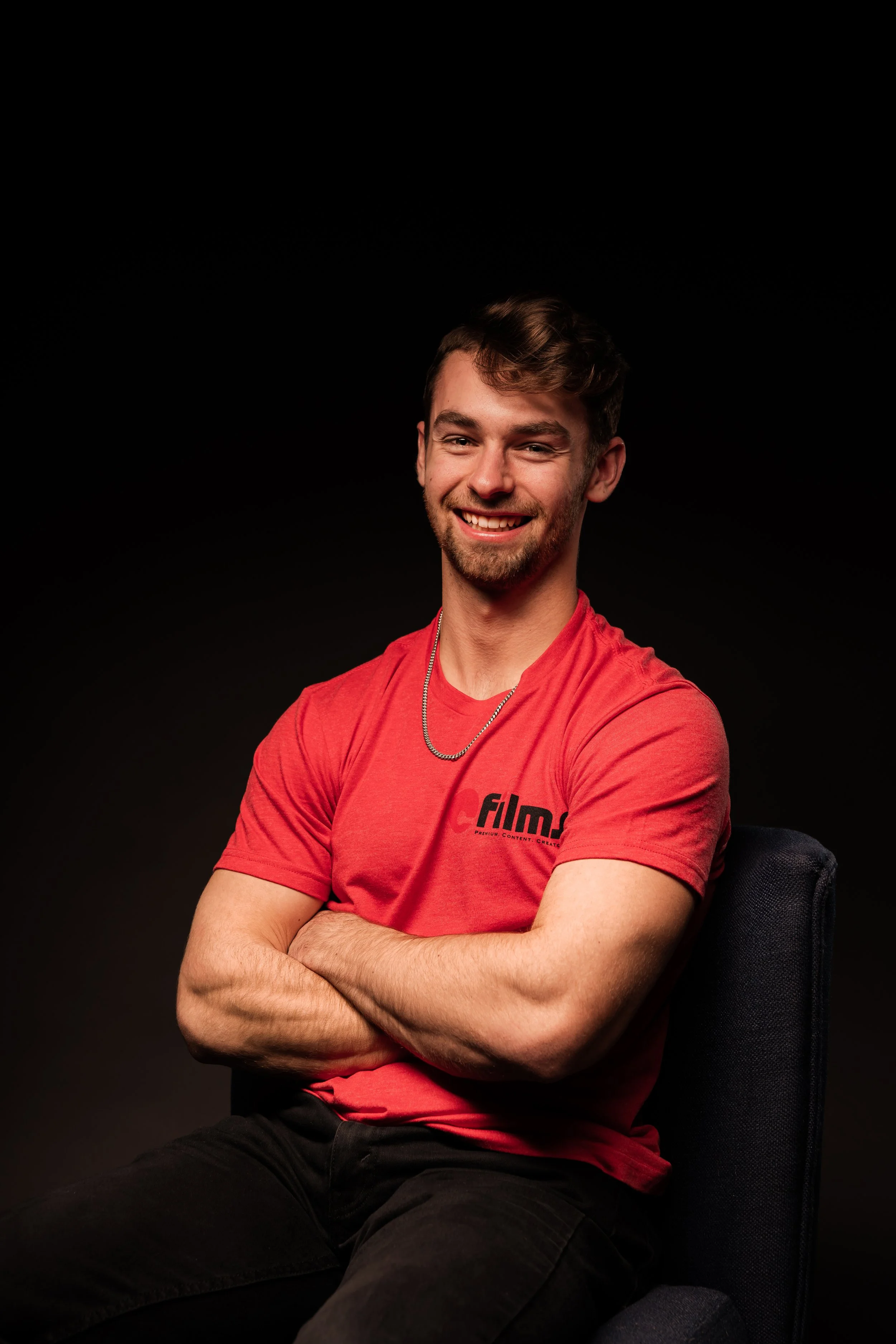Cinema Camera vs. iPhone: Why Hiring a Professional (With a Real Camera) Still Matters
Let’s be real: iPhones and other smartphones have come a long way. Today, your pocket can hold a camera capable of shooting in 4K, recording in ProRes, and using cinematic blur effects with just a tap. So it's no surprise that more people than ever are DIY-ing their content. But when it comes to commercial projects, brand storytelling, and high-performance industries like motorsports, there’s still no substitute for hiring a professional videographer with cinema-grade equipment.
If you’re weighing the cost of hiring a professional against just pulling out your phone, this blog breaks down the key differences—from image quality and audio to storytelling, post-production, and why it especially matters in the world of motorsports marketing.
Resolution Isn’t Everything
Just because your phone shoots in 4K doesn’t mean the footage will hold up against a cinema camera. Sensor size, dynamic range, and lens quality all make a massive difference in the depth, clarity, and feel of the image.
Cinema cameras like the Sony FX6, RED Komodo, or Canon C70 offer:
Larger sensors that handle low-light scenes with less noise
More data-rich files and minimal image loss during recording
Interchangeable lenses for depth and variety
Better color science for accurate, cinematic skin tones and environments
The result?
Footage that looks rich, dimensional, and professional—especially when graded and edited.
Sound, Lighting & Control
High-end visuals are only part of the story. Sound and lighting play a massive role in whether your video feels polished or amateur.
Phones have built-in mics, but they can’t compete with the clarity and isolation of professional shotgun microphones, lavalier setups, or external recorders. Wind, background noise, and distortion are common problems with phone-recorded audio.
Lighting is another limitation.
Smartphones often rely on auto-exposure and software-based compensation, which can fall apart in mixed lighting or fast-changing environments.
Cinema cameras allow full manual control—including the use of ND filters, variable frame rates, and external lights to sculpt the look and mood of a scene.
The Value of a Skilled Cinematographer
Gear alone doesn’t make great content—vision does. A Director of Photography (DP) brings not just high-end tools, but the creative instinct to use them intentionally.
Professional DPs understand:
Framing and composition that guides the viewer’s eye
Camera movement that builds emotion or suspense
How to light a scene to enhance the mood
When to shoot wide vs. close for storytelling impact
It’s the difference between capturing a moment and crafting one.
Why It Especially Matters in Motorsports Marketing
Motorsports is one of the most visually demanding industries in video production. You’re dealing with speed, vibration, noise, unpredictable movement, and high stakes—conditions that phones simply aren’t built for.
To capture the thrill of motorsports, you need:
High-frame-rate shooting (120fps and beyond)
Stabilized rigs like gimbals, car mounts, or drones
Multi-cam setups for full coverage
Specialized lenses for action and detail shots
At CFilms, we use tools like the RED Komodo, Tilta Hydra Alien car mounts, and FPV drones to create immersive, cinematic racing content. We don’t just record what happened—we slow it down, amp it up, and turn each moment into an emotional, brand-worthy story.
From sparks flying off a chassis to a driver’s laser-sharp focus in the cockpit, slow motion and high-resolution imagery reveal what raw footage can’t. That kind of visual storytelling is what connects with audiences and sponsors alike.
Post-Production Flexibility & Long-Term Value
Footage from a cinema camera is easier to work with in post-production. Higher-quality files mean:
Greater color grading flexibility
Sharper images, even after cropping or reframing
Cleaner slow motion
Better integration into graphics-heavy edits or brand visuals
And because the footage looks polished from the start, it becomes versatile brand content. You can pull b-roll for social, reuse clips in sponsor decks, or repurpose footage into promos and reels without it looking dated or amateur.
Takeaways
Phones are amazing for spontaneous moments, behind-the-scenes snippets, or casual content. But when it comes to professional video—especially in high-performance industries like motorsports—there’s no substitute for the real thing.
Hiring a professional videographer with a cinema camera means investing in clarity, creativity, and credibility. It shows your brand takes quality seriously.
If you’re still not convinced… check out this video where I test a cinema camera vs. an iPhone!
Looking for a videographer in MN who understands the importance of high-quality, story-driven visuals?
Take your first step towards leveling up your marketing with professional video content.
(Located in MN, available worldwide)
About the author
Tony Callen is a Minnesota-based Director of Photography and founder of C Films, known for his cinematic take on motorsports and branded content. With deep technical know-how and a strong storytelling eye, he captures high-speed action and emotion with precision—using pro-level gear to turn every shoot into something unforgettable.


